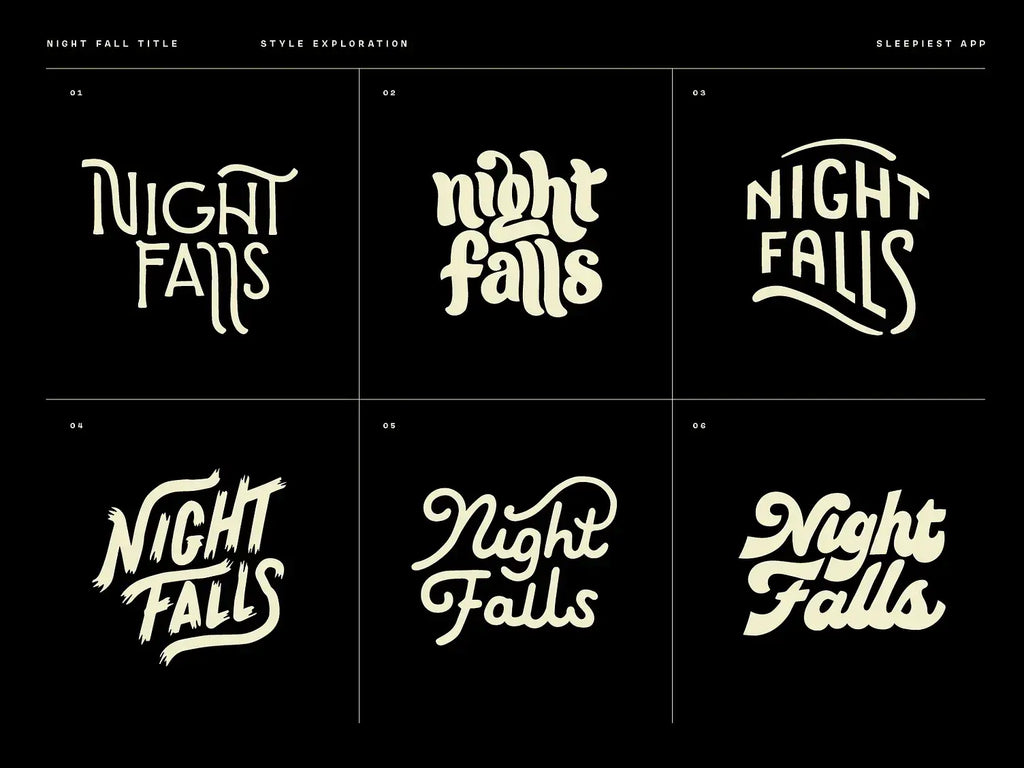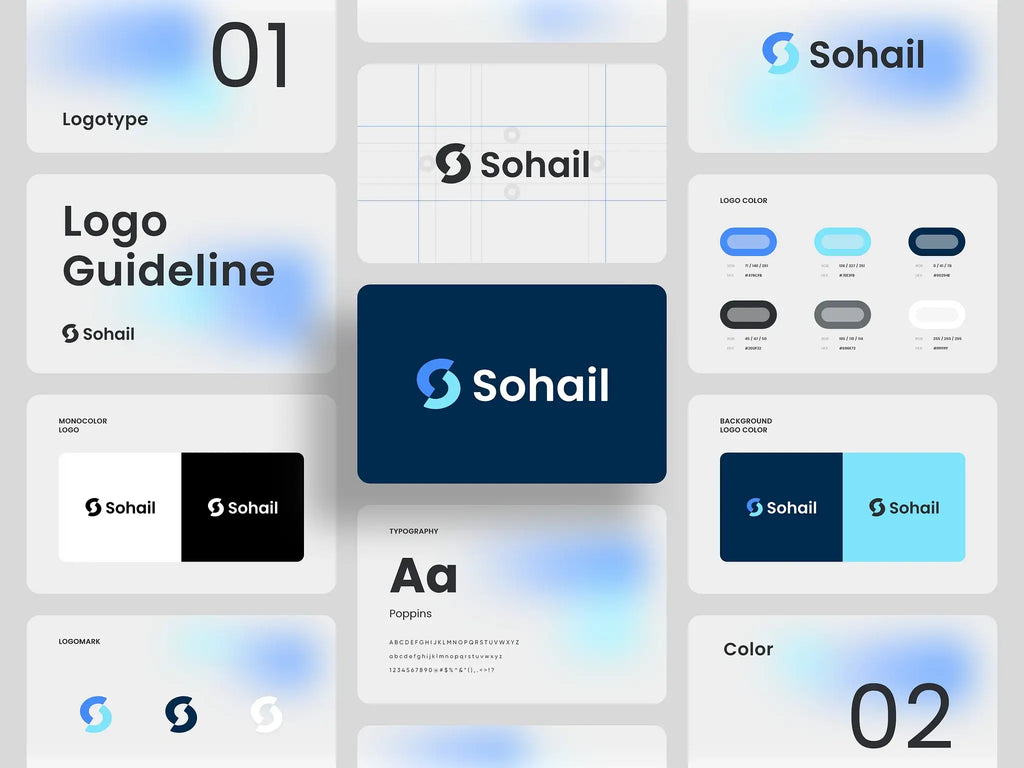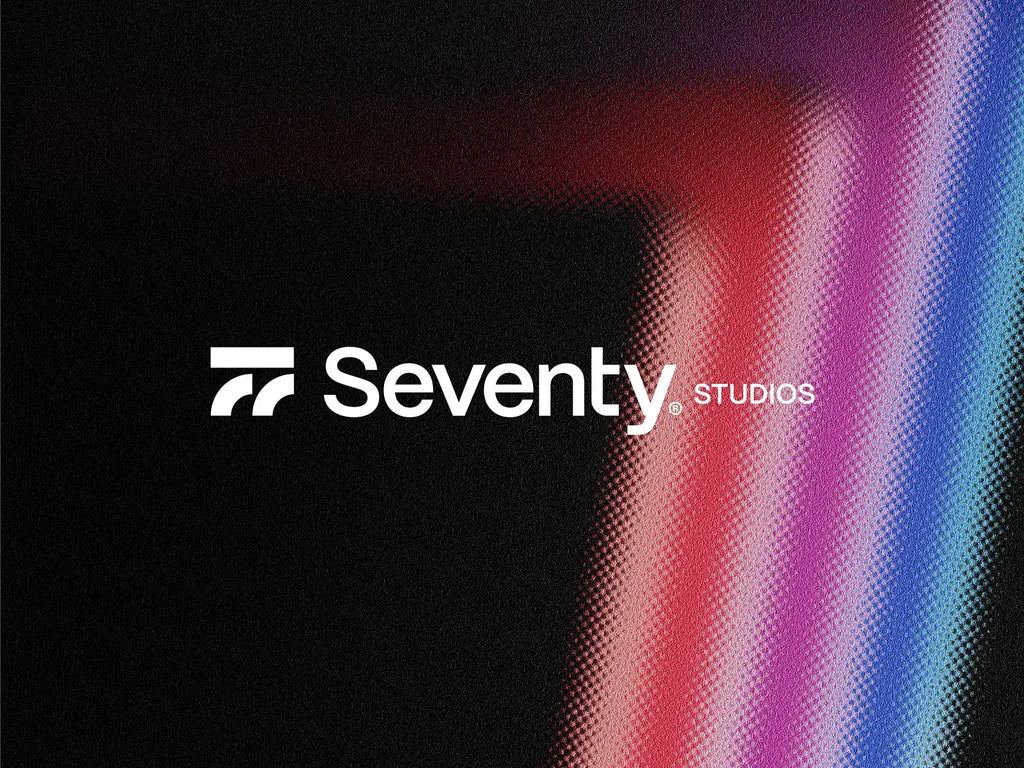Proper Logo Design Concept Requirements for Clients

Source: Wells Collins, Night Falls Title Concept Sketches, Dribbble, https://dribbble.com/shots/18837443-Night-Falls-Title-Concept-Sketches
Creating the perfect logo for a brand goes beyond mere artistic endeavor; it's a strategic process that intertwines design with deep understanding. For designers and clients alike, the initial stage of defining the logo design concept is critical. It sets the groundwork for a symbol that not only captures the essence of the brand but also communicates effectively with its target audience. This article outlines the essential requirements clients need to provide to ensure their logo encapsulates their business's vision, values, and objectives.
When clients come prepared with a comprehensive brief, it significantly streamlines the design process, reduces revisions, and enhances the overall effectiveness of the logo. By specifying detailed information about their brand's identity, target market, and design preferences, clients can collaborate more effectively with designers. This not only helps in crafting a logo that truly represents the brand but also optimizes the design process to meet strategic business goals. The following points will delve into the specific requirements needed from clients to achieve a logo that stands out and serves its purpose efficiently.
Understand the Brand's Mission and Vision
A logo is more than just an image; it's a visual representation of a brand's mission and vision. As a foundational aspect of logo design, understanding the brand’s mission and vision is essential for creating a logo that truly reflects the company’s core identity and aspirations. Clients should articulate what their business stands for and the goals it aims to achieve. This clarity helps designers craft a logo that not only resonates with the brand but also encapsulates its future ambitions.
When defining the mission, clients should describe the purpose of their business, the problem it solves, and the unique value it offers to its customers. The vision statement, on the other hand, should project where the company sees itself in the future and how it intends to evolve and grow. These elements provide crucial context that influences the logo’s design, ensuring it conveys the right message and emotion.
A well-defined mission and vision create a strong foundation for the logo design process. They guide the designer in choosing the right elements that align with the brand’s ethos, such as colors, shapes, and typography. Therefore, it's vital for clients to invest time in reflecting on and communicating their brand’s core principles and long-term objectives clearly and concisely.
Define the Target Audience
The effectiveness of a logo largely depends on how well it communicates with its intended audience. Clients need to provide a clear and detailed description of their target audience to tailor the logo design specifically to those who will interact with the brand the most. Understanding the audience involves more than just demographics like age, gender, and location; it includes psychographics such as interests, lifestyle, and behavior.
Clients should specify who their ideal customers are, what their typical day looks like, what drives their decisions, and how the brand fits into their lives. This knowledge allows the designer to create a logo that appeals directly to those users' preferences and needs. For instance, a youthful, vibrant design might attract a younger demographic, while a more conservative and robust logo could appeal to an older, professional group.
By defining the target audience, clients enable designers to use elements in the logo that resonate on a deeper level with potential users. This strategic alignment increases the chances of the logo making a lasting impression. It ensures that the logo not only captures attention but also fosters a connection with the audience, enhancing brand loyalty and recognition.
Highlight Core Values
Core values are the essence of a brand's identity, reflecting its ethics, culture, and priorities. When embarking on the logo design process, it is critical for clients to convey these values clearly to ensure the final design not only looks appealing but also embodies the principles they stand for. This information guides designers in creating a logo that serves as a true representation of the brand’s character and ethos.
Clients should list their key values, such as innovation, sustainability, integrity, or customer-centricity, and discuss how these influence their business operations and customer relationships. These values should permeate every aspect of the logo design, from the imagery to the color choices and typography. For example, a brand emphasizing eco-friendliness might lean towards earthy colors and natural motifs, while a tech company might opt for a modern, sleek design to convey innovation.
By integrating core values into the logo, businesses ensure that every interaction with the brand reinforces these ideals to the audience. This not only helps in building a trustworthy and relatable image but also aids in attracting customers who share or aspire to these values. Ultimately, a logo that vividly illustrates a company’s core values can significantly enhance brand recognition and loyalty.

Source: MUhammad Sohail, Sohail - Brand Guideline, Dribbble, https://dribbble.com/shots/14676057-Sohail-Brand-Guideline
Color Preferences
Color is a powerful tool in logo design, capable of conveying emotions and messages at a glance. Clients should provide designers with specific color preferences or the emotions they wish to evoke through their logo. Understanding the psychology of colors can significantly influence how the target audience perceives the brand, making this information invaluable in the design process.
Clients need to consider their brand's personality and the message they want to communicate when selecting colors. For example, blue can evoke trust and professionalism, making it ideal for financial institutions, while green might be used to suggest health and sustainability for eco-friendly brands. Clients should also be aware of cultural connotations associated with certain colors to ensure their logo communicates appropriately across different markets.
Providing a palette or examples of preferred colors can help designers better align the design with the client’s vision. Additionally, discussing undesirable colors can prevent misalignments and ensure the logo will resonate with the intended audience. This collaboration enables the creation of a visually appealing logo that effectively communicates the brand’s message through strategic use of color, enhancing brand recognition and emotional connection with the audience.
Typography Suggestions
Typography in logo design is not just about choosing fonts; it's about finding the right typeface that complements the brand's personality and values. Clients should provide specific suggestions or preferences regarding typography that aligns with their brand identity. This guidance is crucial for designers to select typefaces that enhance the logo's readability, aesthetic appeal, and brand consistency.
Clients may prefer a bold, modern font to reflect strength and innovation, or a classic serif font to convey trustworthiness and tradition. Understanding the connotations associated with different font styles helps in making informed decisions that support the brand's messaging. Clients should also consider legibility across various media, from digital displays to print, ensuring the typeface remains effective in all contexts.
Furthermore, clients should discuss the potential for custom typography. Custom fonts can provide uniqueness and exclusivity, setting a brand apart from its competitors. Whether opting for an existing font or a custom design, clear communication of typographic preferences is essential to achieving a cohesive and impactful logo design.
Logo Style and Type
The style and type of a logo play a significant role in its effectiveness and recognition. Clients should clearly define their preferred logo style to guide the design process effectively. Whether it's a symbolic icon, wordmark, or combination mark, each type serves different branding purposes and conveys unique brand attributes.
Iconic logos are great for brands wanting a simple yet powerful symbol to represent their business, suitable for companies with recognizable products or services. Wordmarks focus on the name itself, styled in a unique way to capture the brand’s essence, ideal for new businesses aiming to increase brand recognition. Combination marks offer versatility, combining both text and symbol for a comprehensive brand representation.
Clients should provide examples or describe the attributes they wish to see in their logo. This clarity helps designers understand the brand's market positioning and desired visual impact. Discussing the pros and cons of each logo type and how they align with the brand's marketing strategies ensures that the final design not only looks appealing but also functions well across different platforms and scales efficiently. This strategic approach to selecting the right logo style and type is critical for creating a lasting and recognizable brand identity.
Usage Context
Understanding the usage context is pivotal in designing a logo that is both functional and effective across various platforms. Clients should specify where the logo will be used—be it digital media, print, merchandise, or large-format advertising—to ensure the design adapts well to different environments. This information is crucial for designers to create a versatile logo that maintains its integrity and impact no matter the scale or medium.
For digital applications, logos need to be optimized for screens, ensuring they are legible and visually appealing on devices of all sizes, from smartphones to large monitors. For print, considerations include how well the logo translates to different materials and techniques, such as paper, fabric, or even metal. Merchandise usage demands a logo that is adaptable to various product shapes and sizes, requiring a flexible design that looks good on anything from a pen to a billboard.
Providing a detailed description of all intended uses will guide the designer in choosing appropriate colors, sizes, and details that enhance visibility and recognition. It's essential for the logo to perform well in both color and black and white, and to be scalable to different dimensions without losing clarity. This focus on the practical aspects of logo usage ensures that the final design not only represents the brand effectively but also functions seamlessly across all intended platforms.

Source: VASK Studio, Seventy Studios, Dribbble, https://dribbble.com/shots/18906485-Seventy-Studios
Competitor Analysis
Competitor analysis is an essential component of the logo design process, helping to ensure that the final logo stands out in a crowded market. Clients should provide designers with information about their main competitors, including their logos and visual strategies. This insight allows designers to develop a logo that distinctly differentiates the brand from others in the same industry.
Analyzing competitors’ logos helps in identifying common themes and elements that may be overused within the industry, thus avoiding clichés and emphasizing uniqueness in the client's logo. It also provides an opportunity to leverage design elements that may resonate well with the target audience yet are underutilized by competitors, giving the client's brand a competitive edge.
Clients are encouraged to discuss what they admire about competitor logos and what they feel could be improved. This discussion can inspire innovative approaches to the design that enhance the brand's appeal and marketability. Furthermore, understanding the competitor landscape helps in positioning the brand more strategically, ensuring that the logo not only captures attention but also conveys a clear message of what makes the brand unique.
Effective competitor analysis contributes to a more informed design strategy, enabling the creation of a logo that is not only visually appealing but also strategically positioned to outshine competitors and attract the right customers.
Inspirational Examples
Providing inspirational examples is a crucial step in the logo design process, as it helps designers grasp the aesthetic and conceptual preferences of the client. Clients should share logos and design elements that inspire them, along with explanations of what specifically appeals to them in these examples. This could include particular colors, font styles, imagery, or the overall feel of the logo.
By presenting a collection of inspirational logos, clients enable designers to identify patterns and themes that resonate with the brand’s vision. This does not mean copying elements from existing logos, but rather understanding the underlying principles that make these logos effective and appealing. It’s beneficial for clients to explore a broad range of sources for inspiration, from competitors within their industry to successful brands in unrelated sectors.
This approach not only fuels creativity but also ensures that the final logo design aligns closely with the client’s expectations and preferences. It provides a clear direction for the design process, allowing designers to create a logo that is both original and reflective of the client's brand identity. Inspiration is a powerful tool that can bridge the gap between concept and creation, facilitating a more efficient and targeted design process.
Budget and Timeline
Discussing budget and timeline upfront is essential for setting realistic expectations and ensuring a smooth logo design process. Clients should clearly define their budget constraints and timeline requirements at the outset to align the project scope with their resources and needs.
A well-defined budget helps in determining the depth of research, the complexity of the design, and the number of revisions included. It also influences whether additional services, such as branding or collateral design, can be integrated into the project. Being transparent about budget limits allows designers to propose solutions that maximize value without compromising quality.
Similarly, establishing a clear timeline is crucial for planning the design phases and ensuring timely delivery. Clients should communicate any critical deadlines, such as product launches or marketing campaigns, which the logo needs to coincide with. This enables designers to schedule the work effectively, allocate resources appropriately, and set milestones for feedback and revisions.
Effective communication about budget and timeline not only helps in managing the project efficiently but also prevents misunderstandings and ensures that both parties are satisfied with the final outcome. By setting these parameters early on, clients can foster a professional relationship that respects the constraints and capabilities of both the designer and the brand.
Conclusion
Establishing clear and detailed requirements for a logo design concept is imperative for both clients and designers to achieve a successful outcome. By effectively communicating the brand's mission, target audience, core values, and aesthetic preferences, clients can greatly enhance the design process. Additionally, considering practical aspects such as usage context, budget, and timeline ensures that the logo not only looks appealing but also serves its intended purpose efficiently. With these guidelines in mind, clients and designers can collaborate to create a logo that powerfully represents the brand and resonates with its audience, fostering brand identity and market presence.
Let Us Know What You Think!
Every information you read here are written and curated by Kreafolk's team, carefully pieced together with our creative community in mind. Did you enjoy our contents? Leave a comment below and share your thoughts. Cheers to more creative articles and inspirations!














Leave a Comment